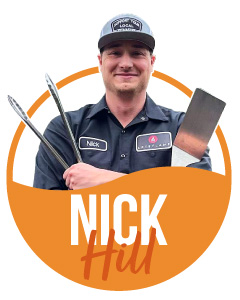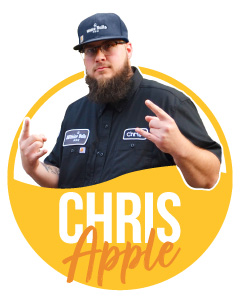Outdoor Refrigeration FAQ

Nothing’s better than a chilled drink in the heat of summer. You can enjoy the scorching sun with friends and loved ones with outdoor refrigeration. Barbeques Galore can help you set up all your outdoor appliances, from the outdoor refrigerator, a wine cooler, and Kegerator to the ice maker. Contact us today for a fully fitted outdoor kitchen service.
What is the meaning of 'outdoor rated' in outdoor refrigeration?
An appliance with an 'outdoor rated' mark is safe to use outside. Underwriters Laboratories (UL) is the organization that gives this rating. They conduct performance tests and assess appliance durability, and component quality to rate appliances. A UL-certified outdoor refrigerator is safe to use outside, can withstand weather fluctuations and extremes, and sustains internal temperatures beyond 100°F.
What is the meaning of 'energy star rated' in outdoor refrigeration?
The energy star rating measures energy efficiency. Therefore, an appliance with this rating is energy efficient. It is a regulation of the Environmental Protection Agency (EPA) that seeks to reduce the rate of global warming.
What is the implication of a food-safe certified appliance?
The NSF international authenticates food safety on consumer goods. If your outdoor refrigeration has this certification, the appliance has food-safe materials. It also keeps internal temperatures at 40°F constantly.
What does 'integrated' or 'panel ready' mean?
Both words have the same meaning. The outdoor refrigeration panel does not have the default external stainless steel material. You get to choose the finishing you want.
How cold do beverage coolers get?
Beverage coolers get to 40°F to 45°F low. It is too hot to chill food safely and too cold to store wine. Even if some beverage coolers have freezing capabilities using the feature only overworks the appliance.
Which is the best to purchase - a compact refrigerator or a beverage cooler?
It all comes down to the purpose of your purchase. If you want to store food, a refrigerator is your best option. Its low temperatures are perfect for food preservation. If you need to stock drinks and keep them cool, go for the beverage cooler.
Does a beverage cooler make noise?
The answer is yes. A beverage cooler makes more noise than a refrigerator. Luckily, it's a noise you can handle.
How is a built-in refrigerator different from a free-standing refrigerator?
A free-standing refrigerator is a portable cooling unit. You can relocate with it or move it whenever necessary. On the other hand, a built-in fridge is a fixed, custom-designed appliance fitted in the interior or outdoor kitchen. It usually matches the cabinets or complements the kitchen's layout.
Is it safe to put a beverage cooler on top of the counter?
Counter-depth beverage coolers are more common in indoor than outdoor kitchens. Although people do not use mini beverage coolers as frequently as regular-sized coolers, they are still practical appliances. You will typically find them in bars. Thus, they are perfectly safe to store on the countertop.
What is the purpose of the drain in a refrigerator? Does it accumulate condensation?
Indoor and outdoor refrigerators have a small drain hole where the condensation exists and percolates into a receptacle placed on top of the compressor. The compressor hits up the condensation, releasing it as vapor. If you notice a lot of water collecting in the receptacle without turning to humid air, you need to get your refrigerator examined by a technician.
Will the outdoor refrigerator still function in the dead of winter?
Outdoor refrigeration appliances stop functioning at temperatures below 40°F. They perform at optimum when temperatures drop from 100°F to 40°F. However, current outdoor refrigerators can withstand the harshest winters because they come fitted with a hitting system that keeps the internal system stable despite the winter storm.
How different is a cold plate from a forced air refrigerator?
Cold plate refrigerators use the old-school cooling system. The outdated technology uses a cooling element to draw out heat from the refrigerator. Forced air refrigerators are much more efficient. It cools the heated air in the appliance and distributes it inside the unit.
What is a dry-aging refrigerator?
The dry-aging refrigerator is excellent for drying out and preserving meat. The appliance keeps temperatures at 32°F and maintains the humidity at the established level. You determine the humidity amount you want in your unit depending on the meat stock. For example, beef requires humidity levels above 85% and below 90%. The refrigerating unit also aerates the meat at regular intervals.
How can I clean my outdoor refrigerator?
The freezer should thaw and drain before you begin cleaning. Assess the drain system for fungal growth and wear and tear. Disconnect the outdoor refrigeration from the power outlet, wash detachable and fixed parts with edible cleaners, solution and scrounge. Wipe the exterior with a stainless steel cleaner, and plug the unit on to let it adjust back to cooling temperatures.
Can my outdoor freezer work if external temperatures fall to 32°F?
It depends on your unit. Outdoor refrigeration appliances like freezers stop working when temperatures fall below 32°F. However, external cooling units today have heating systems that prevent damage induced by low temperatures.
How can I clean my freezer?
Refrigerators and freezers have similar cleaning steps. Unplug the appliance. Make sure the ice on the freezer thaws. Clean the removable compartments and pieces with edible liquid, clean and wipe the fixed portion and wipe the exterior with stainless steel fluid.
Is an outdoor freezer noisy?
If your freezer is loud, you should have it analyzed by a technician. Freezers are quiet appliances despite their overworking compressors. The compressor is responsible for maintaining low internal temperatures.
Do I need automatic defrost control?
You need an automatic defrost setting in your refrigerator for quick ice thawing in your freezer compartment. The control makes life easier and saves time. They require a bit more energy, but they are very handy dandy.
Should I go for a single zone or dual zone wine cooler?
A single zone wine is ideal for one-time use wine storage purposes. Set the temperature to the desired temperature to cool the wine. On the other hand, dual-zone wine coolers provide an additional feature. They provide two storage options— lower temperatures for white wine than for red wine.
Should I get a dual wine cooler?
Yes, by all means, if you enjoy your white and red wine served chilled without the pressure of short-term consumption. You can also get it if you want to expand your wine collection from both sides of the divide. If you love stocking a wide wine variety, this is a good option.
Should I clean my wine cooler? How often should I clean it?
Yes, clean your wine cooler once every year. Unplug it, wipe the removal and fixed parts with edible detergent, and wipe the outside with a stainless steel cleaner. Power it back and adjust the internal temperatures, and stock it.
What temperature is ideal for my wine cooler?
Keep your Champagne, Sparkling, and Dessert wines at 40°F. Sauvignon Blanc and Pinot Grigio can survive between 45°F and 48°F. Chardonnay and Chablis stay cool from 48°F to 52°F. On the other hand, Red Sparkling wines chill between 50°F to 54°F.
What is a thermoelectric wine cooler?
A thermoelectric wine cooler is an indoor refrigerating unit without movable parts. It cools the unit by dispensing heat through a cooling node and requires a cool environment to perform at optimum. It cannot function in outdoors because of temperature fluctuations and harsh weather conditions.
Which is the best alternative between an indoor and outdoor wine cooler?
Go for whatever tickles your fancy. An outdoor wine cooler is excellent for parties. You can also throw in LED lights, wine glass panels, and a kegerator to liven the outdoor party mood. An indoor wine cooler is always a fancy, coveted area for any wine enthusiast.
Can I install a stand-alone wine cooler under my counter?
Not all free-standing wine coolers are perfect for an under-the-counter position. However, if you desire to have one, ensure it properly disperses heat, humidifies the condenser, and connects to the appropriate heat plug. Use the manual to establish ventilation and electrical requirements before moving the unit to your desired location.
Which wine cooler should I get between a thermoelectric or compressor?
It depends on the purpose of the wine cooler. The compressor unit is sturdy and capable of withstanding the elements. However, a thermoelectric wine cooler is an indoor appliance where temperatures remain controlled. They also make less noise and have a low holding capacity.
Can I store my non-wine beverages in my wine cooler?
Somewhat yes. For starters, wine cooler designs are suitable for wine bottles. Additionally, unless you have a dual-zone cooler, which provides low-temperature options, it may be impossible to keep your soda chilled with the warm temperatures of your unit.
What are the ideal conditions for aging wine?
Wine will age at 55°F and 50% humidity. Anyway, these conditions are not set in stone. They also vary between the wine types.
Can I use wine coolers to age wine?
It is almost impossible. The only way to achieve this mean feat is to hide the wine cooler in your basement and not open it for five years. Furthermore, it beats the purpose of having a wine cooler and not enjoying chilled wine. Install a wine cellar to age wine—it is that simple.
Can I use my ice maker as a freezer?
If you enjoy fresh, tasteless, bacteria-free ice from your ice maker, kindly do not do it. The most your ice maker can do is make ice or chill your bottled beverage temporarily. A bucket of ice with your choice of drinks in your outdoor kitchen also does the trick.
Is a drain an essential component of an ice maker?
Yes. A drain is significant. Although the ice maker has a cyclic system to ensure water turns back to ice with minimal wastage, some water eventually gets eliminated and finds its way into the drain.
Do I require a drain pump for my ice maker? Which one is the most suitable?
First, assess your unit's drain situation. If it disperses water, then you need a gravity drain. The gravity drain is enough unless your wine cooler system scatters water everywhere but down.
Should I get a plumber for my ice maker installation?
You need a plumber if you suspect something is wrong with your ice maker. Get a licensed plumber while you are at it. Servicing your unit helps you to keep your warranty and get a proper installation.
Do ice makers produce different types of ice?
The Nugget or Sonic ice® are rugged shaped, easy to produce, and the most preferred choice for commercial purposes. Gourmet ice is distinctively clear and thimble-shaped because it comes from pure water. Crescent ice is found in most home refrigerating units and has the characteristic flat top and round bottom similar to the crescent shape. Cube ice resembles cubes.
Can I change the shape my ice maker produces?
No, the shape comes pre-fit. You can only choose the shape you want before buying. Choose the shape that suits your needs.
How much ice can my ice maker produce in a day?
Your appliance's brand, model, and ice type determine the volume produced daily. Gourmet, Crescent, and ice cube machines take longer than Nugget ice. Read your manual to find the exact volume.
Are ice production and ice capacity similar?
They are not similar. Ice production is the volume of ice made in a day. On the other hand, ice capacity is the amount of ice your ice maker can contain before it stops production periodically.
How do I clean my ice maker?
Unplug it from the socket, let it thaw, and clean the removable and fixed parts with edible detergent. Wipe the outside. Plug it back and adjust the internal temperatures.
Is it possible to reset my ice maker?
The process is easy-peasy. Switch it off, then on, and voila. You can also prime it depending on your manufacturer's instructor's manual.
Is a water filter necessary for an ice maker?
Absolutely yes. The water filter is a decontaminant. It keeps the ice clean and safe for consumption.
Will an outdoor ice maker operate on my house's standard electric outlet?
Ice makers do not need additional wiring. They plug on standard outlets. There is no need to worry about extra wiring.
Is a scoop part of the ice maker?
Yes. It comes with an ice maker. Always use the scoop that came with your ice maker only and avoid glass scoops.
How do I clean my Kegerator?
Unplug the unit and let it thaw. Clean the removable and fixed parts. Clean the outside. Plug the unit back on and let the temperatures adjust, and stock the unit.
How long do Kegs remain consumable in the Kegerator?
It depends on the type of beer. If it is non-pasteurized beer, it should take approximately 45 to 60 days when stored at 40°F to 50°F and pressurized with carbon dioxide. Pasteurized stay for 90 to 120 days.
Are there beer sizes?
A full keg or half-barrel contains 165 twelve-ounce beers or 105 sixteen-ounce beers. In contrast, a Pony keg or quarter barrel contains 82 twelve-ounce beers or 62 sixteen-ounce beers. On the other hand, a Torpedo keg or sixth barrel has 56 twelve-ounce beers or 42 sixteen-ounce beers.
How many Keg sizes does a kegerator hold?
The size of the keg is constant, but the beer volume determines capacity. A kegerator can hold one full keg. It can also hold two-quarter barrels or four-sixth barrels.
Will I get hoses and couplings with my new Kegerator?
It depends on the model and brand. Some models and brands include hoses and couplings. Other brands do not include these two parts.
What is the ideal temperature for my Kegerator?
It depends on your liquor collection. Set the Kegerator between 40°F to 50°F for your beer. Set the temperature from 45°F to 65°F for wine.
Is CO2 necessary for my Kegerator?
Yes, it is essential. CO2 provides pressure to keep the beer chilled. The pressure also facilitates easy dispensing through the nozzle.
Does the Kegerator come with CO2?
Yes. You purchase the Kegerator with a carbon dioxide reservoir attached to it. You can replace the CO2 once the pressure is used-up.
How long can I use the carbon dioxide in my Kegerator?
The CO2 is only as good as the pressure lasts. The more you use the Kegerator or store beer, the faster it loses its pressure. Therefore, it depends on usage.
How can I connect the keg to the Kegerator?
Let the barrel cool in the Kegerator. Get the proper coupler for the beer in the keg—local beers use the D-system. Open the carbon dioxide tank and set the pressure. Ensure its regulator values are open and adjust the regulator to serving pressure and keep modifying the pressure until you reach a suitable unit.
How frequently should I clean the tap?
Every time you change the beer in the keg, you need to clean the tap. Frequent cleaning prevents taste contamination from the previous containment. It also prevents mold infestation.
Does a tapped keg need to remain chilled?
Always keep the keg chilled. Whether the keg is tapped or untapped, always have it chilled. Chilling the keg keeps the beer crisp, tasty, and safe to drink.
Do I need to refrigerate the kegerator tap tower?
It depends on your Kegerator brand. The only kegerator manufacturers that provide this component are Perlick and Alfresco. If you do not have either of these two brands, you will need to refrigerate your tap tower.







